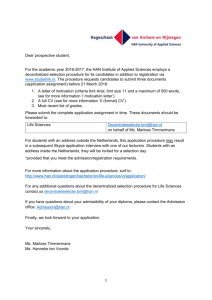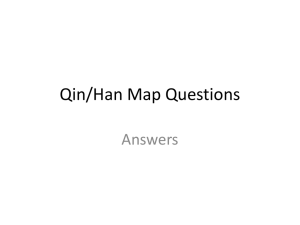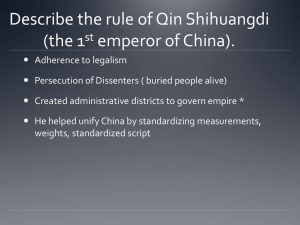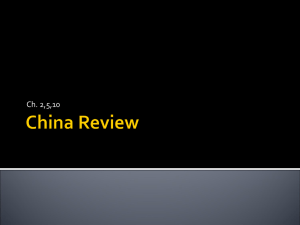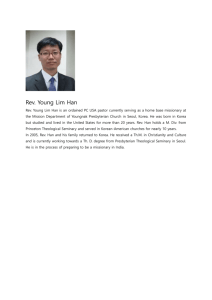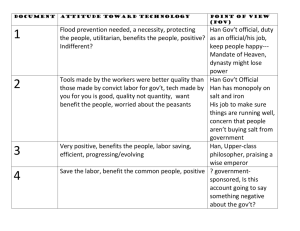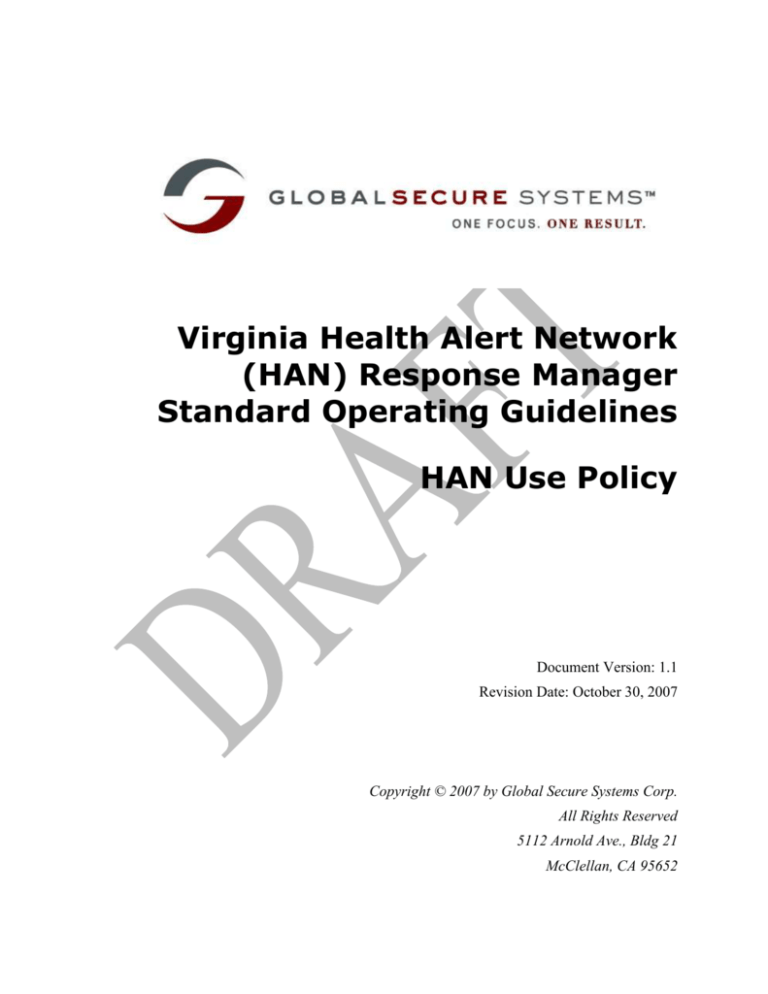
Virginia Health Alert Network
(HAN) Response Manager
Standard Operating Guidelines
HAN Use Policy
Document Version: 1.1
Revision Date: October 30, 2007
Copyright © 2007 by Global Secure Systems Corp.
All Rights Reserved
5112 Arnold Ave., Bldg 21
McClellan, CA 95652
Purpose
The purpose of this document is to outline the use policies and guidelines associated with the
Virginia Department of Health’s Health Alert Network (HAN). This policy is executed on the
date prescribed and is subject to regular revisions.
Authority
The Commonwealth of Virginia, Department of Health, Office of Emergency Preparedness and
Response through Public Health Preparedness Cooperative Agreement funds administered by the
Centers for Disease Control and Prevention.
Background
The Health Alert Network (HAN) is a nationwide program which strives to establish
communications, information sharing, and organizational infrastructure in order to prepare for
and respond to health threats, including the possibility of bioterrorism. The HAN links critical
health care officials and first responders from varying organizations and jurisdictions. The
Centers for Disease Control and Prevention (CDC) initiated the development of the HAN, in
partnership with the National Association of County and City Health Officials, the Association
of State and Territorial Health Officials, and other health related organizations.
The Virginia Department of Health’s Health Alert Network (HAN) utilizes Global Secure
System’s Response Manager solution package as the engine for the HAN system. Response
Manager is a secure web based system that allows for rapid communication with first responders
and essential health officials throughout the state via email, telephone, fax, alphanumeric pagers,
Blackberrys, and sharing of information on the Response Manager web portal. Designated
personnel throughout the state have access to the Response Manager site, where they can view
and confirm receipt of alert-related information, read news/announcements, access links to other
relevant web sites, etc. Response Manager also provides a collaborative work environment
where sensitive or confidential information may be securely shared and access restricted to
certain users if necessary. The document library can also include a variety of resources related to
health, preparedness, and response such as; the results of current research/studies, best practices
guidelines, response plans, disease reports, etc.
Response Manager is an internet-based, license COTS software application. The level of access
granted to the Response Manager portal, and therefore the functionality available is determined
by a user’s license level. There are three types of Response Manager licenses: Administrator,
Collaborator, and Alert level. Administrators have the most Response Manager functionality
available, typically they are responsible for managing users, portal content, and access to portal
content. Collaborators have access to the document library, can view the entire content of the
Response Manager home page, and can both send and receive alert messages. Alert level license
users can view most of the Response Manager home page content and receive/confirm alert
messages. Each Health District will initially receive two administrator, ten collaborator and
unlimited altering licenses.
2
© 2007 Global Secure Systems Corp.
HAN STANDARD OPERATING GUIDELINES
Key Guidelines for Response Manager
Users
Maintaining profile information
Using the Directory
Accessing content in the Document Library
Alerting: sending, receiving, and confirming
Response Manager Coordinator Responsibilities, account and portal management
Maintaining Profile Information
Ensuring accurate profile information is crucial to the success of the overall system. Users
should strive to have complete, accurate, and up to date contact information in the system.
Profile information should be examined when logging into the system. This will also enable you
to see any updated news or announcements on the Response Manager home page and receive
any alert information from CDC, VDH, your local health department, or any other entity with
information relevant to the state of public health in Virginia.
POLICY: Profile information management is accomplished in three ways:
User self-confirmations through frequent access into the system
Jurisdictional, departmental or divisional mandatory requirements to confirm information
on the first of every month
Quarterly usage checks by HAN local administrators and subsequent advisements to
those that are delinquent.
The Directory
The Response Manager Directory is an extendable role-based database. This directory contains
the profile information (contact information) of all HAN users. The directory is organized into a
series of state standardized, real-world roles which make up a set of responsibilities or
potentially a geographic region. This role-based directory makes it possible to look up the
contact information for individuals who are responsible for certain duties, regardless of whether
they are the primary or back up for that role, position or set of responsibilities.
The name of an individual is not necessary in order to find contact information in the directory.
Moreover, within the directory is a search function, which allows for creating customized lists of
individuals or further refinement of a search for contact information that may need to be more
specific than the role level.
POLICY: HAN has implemented a series of state-standard roles for use by each jurisdiction,
department or agency. All health agencies at the local and state level will begin using the PHIN
Public Health roles, published in the PHIN “Partner Communication and Alerting Functional
© 2007 Global Secure Systems Corp.
3
Requirements” (4/26/05). Utilizing the standard PHIN roles will help ensure that interjurisdictional alerts will have common roles to send and receive to and from. The standardized
roles are listed below.
Local administrators will place persons within their purview into the appropriate
standardized, primary role.
Appropriate persons will be placed in back up standardized roles.
The standardized roles will be preceded by the jurisdiction, department or divisional
identifier. (example; Health Officer - Chesterfield)
Additional specialized roles may be added by the local jurisdiction, department or
division HAN administrator. Each of these roles must be followed by the jurisdiction,
department or divisional identifier. (example: Public Information Officer – Central
Region)
For exceptions to any portion of this policy, the HAN Exception Policy process must be
followed. Please see Attachment A, HAN Exemption Waiver Request Form.
Table 1 - Required Public Health Roles:
#
1
4
PRIMARY
ROLE
Health Officer
NATIONAL,
STATE,
TERRITORIAL COUNTY DEFINITION
X
X
Responsible for the direction and
administration of the jurisdiction’s
Department of Health.
X
X
Responsible for the administration of all
Bioterrorism preparedness and responserelated activities within the jurisdiction.
X
X
Responsible for the coordination,
implementation, and maintenance of the
public health alert and information
network for the agency or jurisdiction.
2
Terrorism
Coordinator
3
Health Alert
Network
Coordinator
4
Laboratory
Director
X
X
5
Public Health
Administrator
X
X
6
Emergency
Management
Coordinator
X
X
7
Chief
Epidemiologist
X
X
Responsible for the coordination of the
laboratory testing and reporting for the
agency or jurisdiction.
Responsible for the management of the
jurisdiction’s Department of Public
Health.
Responsible for the coordination of
emergency response activities.
Coordinates response activities with other
agencies and jurisdictions.
Responsible for the coordination of the
public health surveillance, investigation
and response activities within the
jurisdiction.
© 2007 Global Secure Systems Corp.
HAN STANDARD OPERATING GUIDELINES
8
Public
Information
Officer
X
X
Responsible for the coordination of public
information and emergency risk
communications for the jurisdiction.
9
Communicable/ X
Infectious
Disease
Coordinator
X
Responsible for the coordination of all
communicable and infectious disease
surveillance and investigations and
response within the jurisdiction.
10
Strategic
National
Stockpile
Coordinator
Environmental
Health Director
X
X
Responsible for the coordination of the
pharmaceutical stockpile planning for the
agency or jurisdiction.
X
X
12
Chief
Veterinarian
X
13
Behavioral
Health Director
X
14
Emergency
X
Medical
Services
Authority
Public Health
X
Nursing
Director
Public Health Logistics
Coordinator
11
15
16
Responsible for the coordination and
direction of the jurisdiction’s
Environmental Health department.
X
Responsible for the coordination of
animal disease outbreak response
activities for the agency.
X
Responsible for the coordination of the
mental health services within the agency
or jurisdiction.
X
Coordinates all medical response
activities. Coordinates with other
agencies and jurisdictions and respond to
medical emergencies.
X
Responsible for coordinating the
jurisdiction’s public health nursing
activities.
Responsible for transportation, facility setup,
personnel protective equipment, supplies and other
logistical requirements in an emergency response
situation.
Table 2 - Optional Public Health Roles:
# PRIMARY ROLE
17 Immunization Director
18 Emergency Training
Coordinator
© 2007 Global Secure Systems Corp.
NATIONAL,
STATE,
TERRITORIAL
X
X
COUNTY DEFINITION
X
Responsible for management of
immunization services within
the jurisdiction.
X
Responsible for the coordination
of the WMD and other
emergency training, education,
and distance learning activities
for the agency.
5
19 Quarantine Officer
X
X
20 Laboratory BT
X
X
21 Medical Director
X
X
Responsible for medical/health
services in the jurisdiction
X
Responsible for performing
autopsies in the jurisdiction
22 Medical
Examiner/Coroner
6
Individual responsible for
quarantine enactment and
coordination at the local level to
include international and travel
issues for a region
Responsible for the
administration of BioTerrorism
laboratory testing within the
jurisdiction.
23 Poison Control Center
X
Office responsible for handling
poison injury calls in a region
24 Border Health Director
(Not Applicable to
Virginia)
X
Responsible for cross-border
health issues, coordination and
communication
25 Microbiologist
X
X
A laboratorian that specializes in
performing microbial testing for
the jurisdiction.
26 Epidemiologist
X
X
Individual who performs
analysis of communicable
disease and/or BT information
for their jurisdiction.
27 Technical Training
Liaison
X
X
Coordinates training on the use
of technical systems including
those for IT//communication
28 Emergency Operations
Center Coordinator
X
X
Responsible for managing the
EOC and for brining together the
Individuals who participate as a
members of the Emergency
Operations Center
© 2007 Global Secure Systems Corp.
HAN STANDARD OPERATING GUIDELINES
29 Medical Society
X
X
30 Infection Control
Practitioner
Organization responsible for
maintaining directory
information and communications
with the physician community
Responsible for nosocomial and
infectious disease in a hospital
31 Emergency Room
Director
X
Responsible for running the
hospital emergency room
32 School District Nurse
X
Responsible for school health in
a school district
33 FBI WMD/BT Agent
X
34 Public Health
Investigator/Contact
Tracer
X
35 Animal Control
Director
Responsible for FBI activities
and response in a WMD/BT
event
X
Individual skilled at tracking
down contacts to TB, HIV or
STD cases
X
Responsible for animal bites and
quarantine
The Document Library
The HAN Document library contains web-enabled functionality for document management,
discussions, creation/editing, and version control. The document library is capable of supporting
word-processing, spreadsheet, presentation, and graphic/audio file types. Folder permissions
allow for the customization of access to various areas and therefore materials within the
document library. Workgroups may be created in any way desired to work on specific projects.
The discussion section provides the possibility for real-time threaded discussions which are
anchored on specific documents contained in the document library.
The revision of documents is further enhanced by the storing of a document’s version history, the
document check in/check out, and publication procedure, which allows not only a dichotomy in
authoring privileges but also ensures that users are not working on the same document
© 2007 Global Secure Systems Corp.
7
simultaneously. The document library also has an approval routing process which can be
instituted and has the capability to distribute content via fax.
POLICY: The following are set-up and use policies associated with the HAN Document Library.
Folders within the document library portal should not exceed more than three levels with
two levels being the most preferred. The following folder structure example may be used
as a guideline (first access the document library section of the portal)
Two Deep Folder Example
o Chesterfield (folder)
Chesterfield CDC Cooperative Agreement Quarterly Reports (folder)
Chesterfield Quarterly Report Jan-Mar 06 (document)
Three Deep Folder Example
o Lenowisco (folder)
Lenowisco CDC Coop Agreement Vendor Contracts (folder)
ACME Corp (Folder)
o N-95 Mask Invoice May 06
Actual document library use has led to the recommendation that documents should
always be placed within an appropriate folder according to functional and/or
organizational folder access rights. Assigning a document to a proper category helps
organize the document according to subject matter.
Each individual folder should be limited to a maximum combination of 12-15 sub-folders
and documents for optimal viewing in the document library.
Local HAN administrators should continually assess the document library structure to
ensure optimal usability.
At the discretion of the Office of Emergency Preparedness and Response, copies of alerts
may be posted in the News section of the document library and the Alerts, Advisories,
Updates folder in the document library. If an alert, advisory or update originates from the
Centers for Disease Control and Prevention (CDC), a PDF copy of the alert MUST be
published in the Alerts, Advisories, Updates folder in the document library.
For exceptions to any portion of this policy, the HAN Exception Policy process must be
followed. Please see Attachment A, HAN Exemption Waiver Request Form.
Alerting
Through Response Manager, HAN has the ability to send out alerts via phone (including cell
phones), email (including any device that receives email, such as a Blackberry), pager and fax.
However, this is not just a one way push of information. Response Manager interacts with the
recipient of the HAN message by allowing them to confirm receipt. Response Manager allows
8
© 2007 Global Secure Systems Corp.
HAN STANDARD OPERATING GUIDELINES
for message confirmation through several conduits including telephone, email, Blackberry, cell
phone, and directly on the portal itself. Each Response Manager user may receive these alerts
differently based on what contact devices they have available at any given point in time.
Confirmation of alerts is a vital step because it serves as instant feedback on what
resources/individuals are responding to the concern at hand. Maintaining a complete and
accurate Response Manager profile is important because it will allow for more timely and
efficient delivery of alerts across the state.
Alerts can be sent out to specific users, or a combination of roles and/or role groups using
Response Manager. Through simple management functions each Response Manager user can be
assigned “alertable roles.” These alertable roles will enable that particular user to send HAN
messages to only the individuals which they have been given permission for.
POLICY: The following are policies associated with the use of the alerting component of the
HAN system:
Each jurisdiction, department and division may require a unique evaluation of alerting needs.
HAN management will assist local administrators in developing an Alerting Matrix which
indicates which roles have the ability to alert other roles. The following guidance is set forth
to better accomplish this endeavor:
The senior public health official, department or division chief or designee (generally the
senior local HAN administrator) has the authority to approve and send alerts within that
hierarchical tree.
The senior public health official, departmental or division chief or designee (generally the
senior local HAN administrator) has the authority to also notify the equivalent role across
jurisdictions, departments and divisions. Further dissemination within the receiving
organization is at the discretion of said senior receiving official.
Additional alerting rights are at the discretion of the senior public health, departmental or
divisional official, or designee (usually the senior HAN administrator). In general, roles
should only be able to send alerts laterally and downward across jurisdictional,
departmental, and divisional lines. This alerting principle is known as peer-to-peer
alerting (i.e.: Epidemiologist role being able to alert within the Epidemiologist role).
This is recommended as the maximum level of alert generated according to departmental
hierarchy.
Although actual alerts can be formulated any number of appropriate ways, general
guidelines are recommended regarding specifics such as alert priority, alert duration and
alert content. Please see Attachment B, HAN Alert Priority Definitions, Examples
and Procedures.
Consistent and frequent alerting training and exercises for users is highly recommended.
A drill for all users at least once every month is recommended. The primary purpose of
drilling is to help users get accustomed to the alerting process. Drilling also detects
users’ training needs. Please see Attachment C, HAN Test Alert Scripts and
Procedures.
© 2007 Global Secure Systems Corp.
9
10
At the discretion of the Office of Emergency Preparedness and Response, copies of alerts
may be posted in the News section of the document library and the Alerts, Advisories,
Updates folder in the document library.
For exceptions to any portion of this policy, the HAN Exception Policy process must be
followed. Please see Attachment A, HAN Exemption Waiver Request Form.
© 2007 Global Secure Systems Corp.


